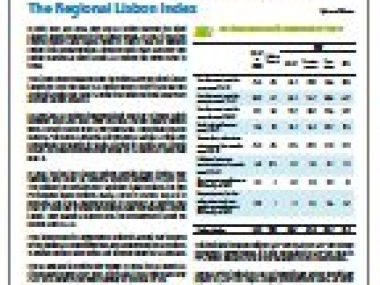New Regional Focus: The Regional Lisbon Index
Edited on
24 June 2019URBACT is part of Europe's cohesion policy: its goal is to help implement the Lisbon-Gothenburg Strategy, which prioritizes competitiveness, growth and employment. The European Commission's Regional Policy department (DG REGIO) has just produced the latest in its series of short papers on regional research and indicators. This paper develops an indicator, the Lisbon Index, to measure how close an EU region is to achieving the main targets for 2010 on employment, education, and research and development, as set out in the EU's Lisbon Strategy.

You will find in this paper two maps illustrating variations in regional performance across Europe, providing a snapshot of the situation in 2007 and tracking progress for the period 2000-2007. The Lisbon Index measures how far regions are from eight Lisbon targets for 2010 . A region scores 100 if it has reached all eight targets , while the region farthest away from all eight targets scores 0.
In both 2007 and 2000, only one EU region reached the eight Lisbon targets included in the Lisbon Index. In 2007, it was the Finnish region Länsi-Suomi, while in 2000 it was the Swedish region Östra Mellansverige.
On average, EU regions improved their score by 10 index points from 2000 to 2007. Nevertheless, the EU average moved quite slowly, increasing from 57 in 2000 to only 60 by 2007. Over this time, the ten fastest movers were: Corse in France (from a very low base), Comunidad Foral de Navarra, País Vasco, Cantabria, Extremadura, Galicia, La Rioja and Comunidad de Madrid in Spain, Kärnten in Austria and Liguria in Italy. All these regions improved their index by 25 points or more. Many URBACT cities are located in these regions.
The top ten Lisbon regions include three Finnish, four Swedish and three UK regions, all scoring between 94 and 100.
Read more:
Submitted by admin on
